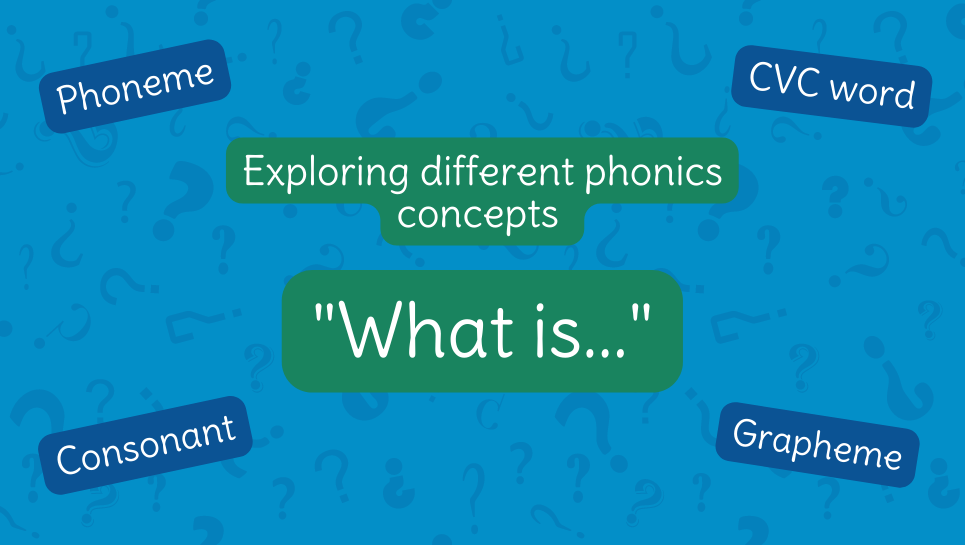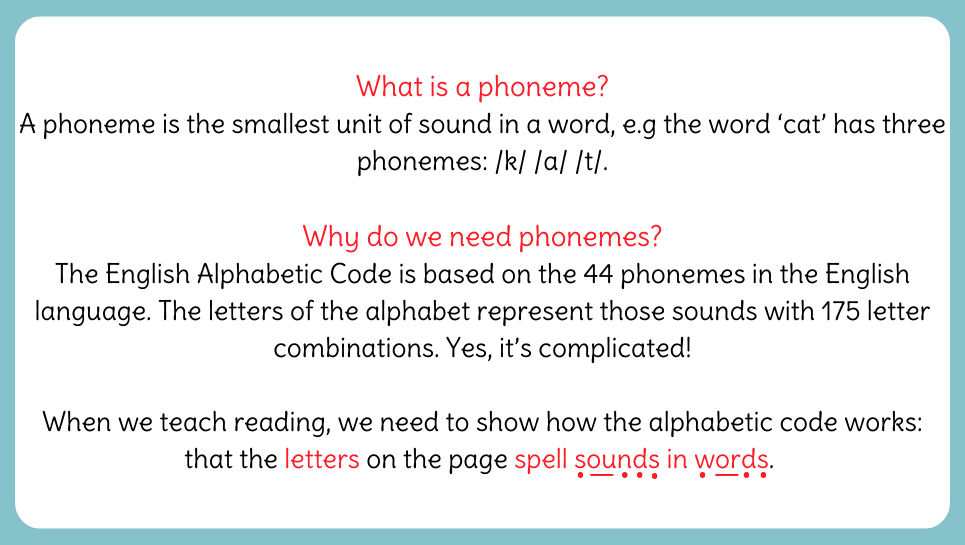In our ‘what is…’ series we’re taking things back to basics! From phonics to decoding, blending and more, we’re going to break things down and give you our expert advice on each area, to help answer any questions you may have around teaching reading.
***
A phoneme is the smallest unit of sound in a word. For example, the word ‘cat’ has three phonemes: /k/ /a/ and /t/. The word ‘stick’ has 4 phonemes: /s/ /t/ /i/ and /k/. The word ‘grow’ has three phonemes: /g/ /r/ and /oe/.
The English writing system is based on roughly 44 phonemes. This depends on pronunciation. These phonemes are represented by 26 letters of the alphabet which are used and reused in different combinations. The framework which categorises English spellings according to 44 phonemes is called the English Alphabetic Code.
What do we need to know about English phonemes?
In English a phoneme can be:
- Represented by one letter as in the word ‘c a t’.
- Represented by two letters as in the word ‘sh i p’.
- Represented by three letters as in the word ‘n igh t’.
- Represented by four letters as in the word ‘d ough’.
- Phonemes can be spelled in different ways. For example, the phoneme /ee/ can be spelled in several ways: bee, seat, he, field, funny, key, etc.
Why is this important?
Phonemes are the building blocks of our writing system. When children learn to read, they are taught how to sound out the letters that represent phonemes in words. They need to learn the sound/letter correspondences so they can recall the phonemes at speed as they blend the sounds into words. This is called decoding.
When beginner readers learn to spell, they need to sound out the phonemes in a word, e.g., /d/ /o/ /g/ and represent each phoneme with a letter. This is called encoding or spelling.



